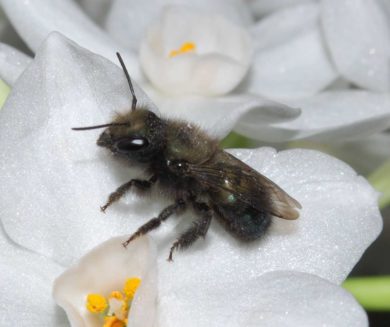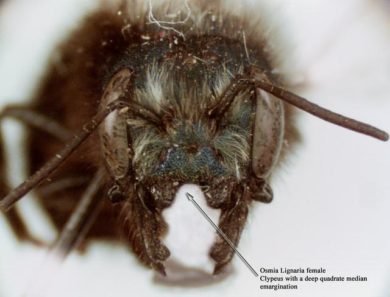
Osmia lignaria female © Doug Burnham
Occurs statewide, though apparently now more localized than historical records suggest it once was. One of the first bees to emerge in the spring and a common inhabitant of “bee hotels”. Occasionally used commercially for pollination of apples and other spring blooming fruit crops.
Females
![]() Males
Males ![]()
Identification: The largest of the regularly occurring bright blue Osmia, similar in size to a honey bee. Females have dark scopal hairs and a distinct notch in the margin of the clypeus. Males are best confirmed with a microscope, but are the most likely candidate for any large, blue Osmia in the early spring (see also O. bucephala).

Female Osmia lignaria face © USDA Bee Biology and Systematics Laboratory, Logan Utah
Similar Species:
Bufflehead Mason Bee (O. bucephala) – Slightly later flight period. O. bucephala are less brilliant blue with more abundant pale hair on the body. Females have an oversized head, while males have a distinctly long spur on the hind tibia.
Other Osmia: Several other spring Osima are similar, but most are either smaller or lack the brilliant blue shine.
Distribution: Abundant in collections from around the state until at least the late 2000’s. There is some evidence that it is being replaced by two non-native Osmia in the same subgenus (O. cornifrons and O. taurus), though it co-occurs with O. cornifrons at several semi-urban sites. Few, if any, records from the lower Champlain Valley.






